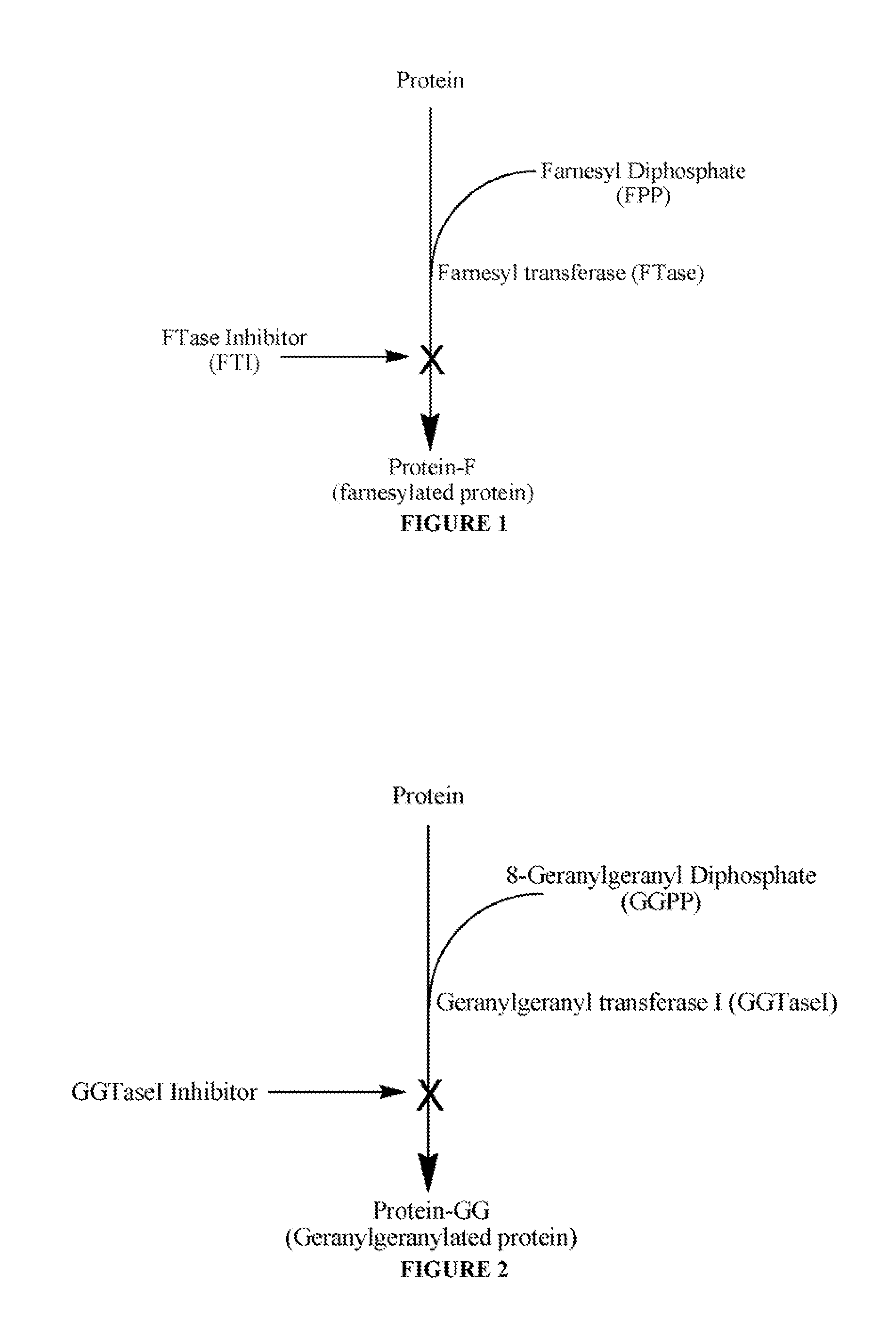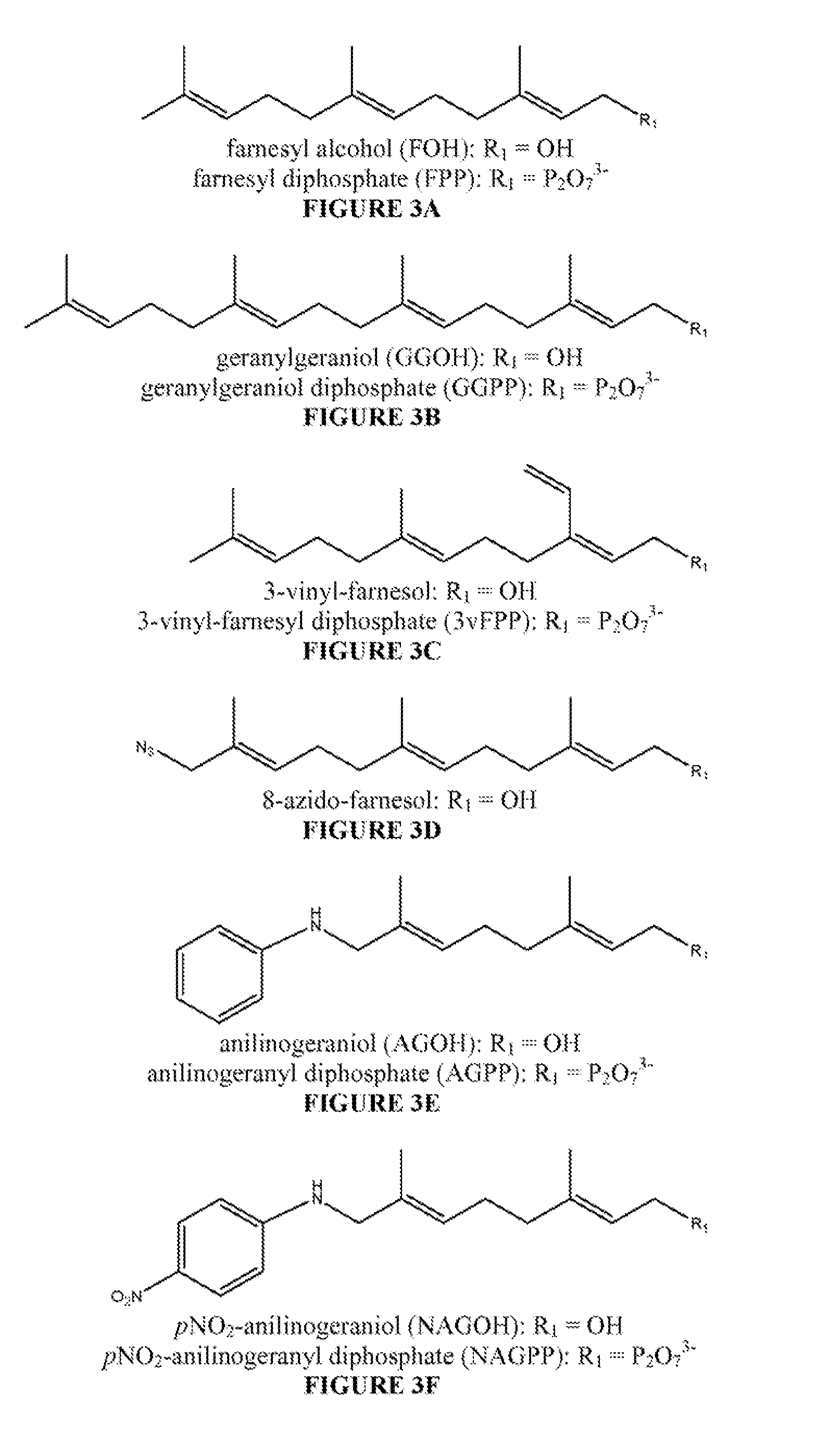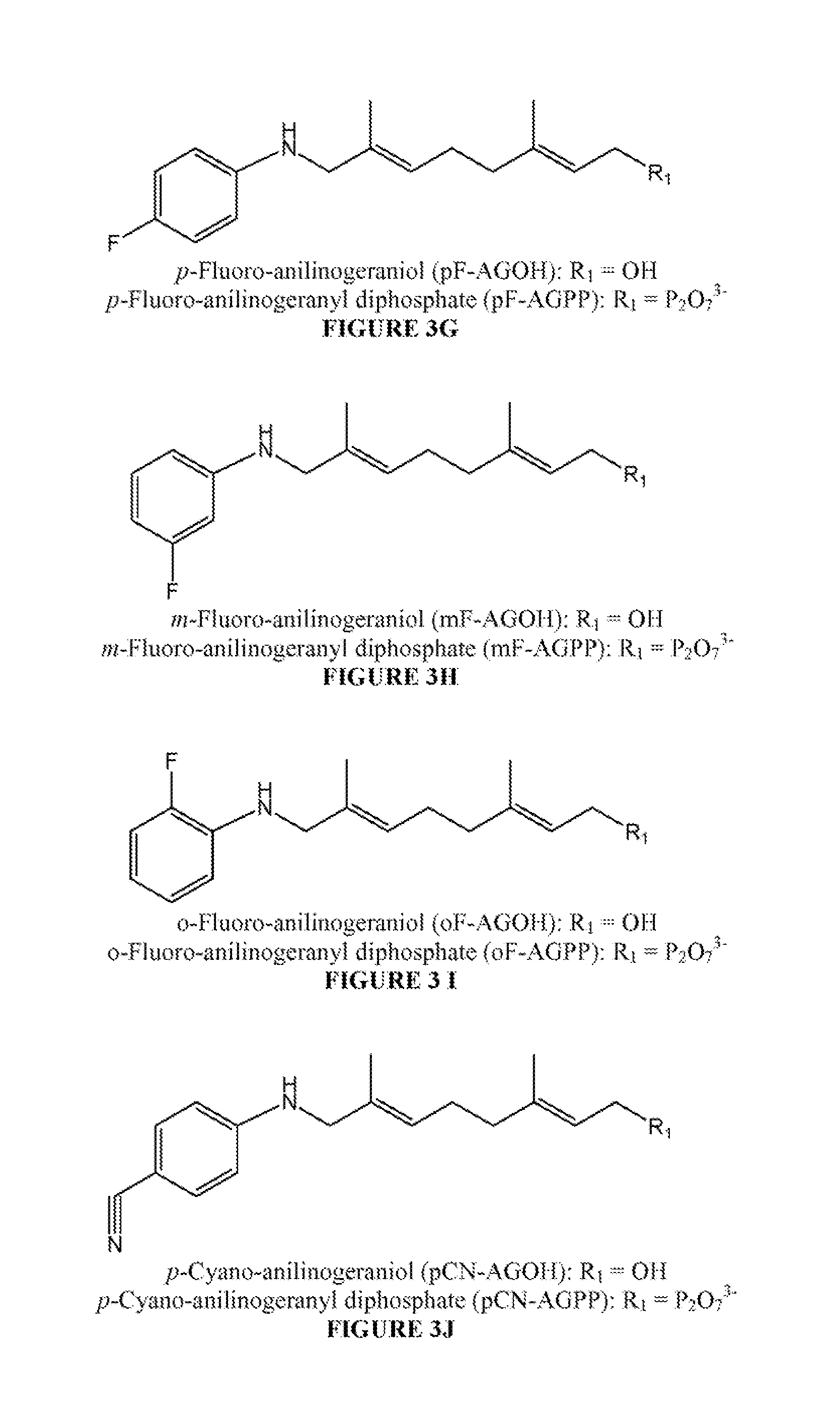Antibodies and unnatural substrates of prenylation enzymes for use in detecting and isolating prenylated proteins
a prenylation enzyme and anti-unnatural substrate technology, applied in the field of anti-prenylation enzymes and unnatural substrates of prenylation enzymes for use in detecting and isolating prenylated proteins, can solve the problems of low sensitivity of autoadsorption detection of weak tritium -emission, difficult undertaking in monitoring the prenylation status of proteins in cells, and inability to provide a convenient method for isolation of modified proteins containing
- Summary
- Abstract
- Description
- Claims
- Application Information
AI Technical Summary
Benefits of technology
Problems solved by technology
Method used
Image
Examples
example 1
Results
Synthesis of Analogue Modified Antigen
[0105]The preparation of the prenyl analogue carrier protein conjugates 6a-b and 7a-b is outlined in Scheme 1, set forth above. The haptens are designed to mimic the C-terminal peptide of a fully processed prenylated protein that has undergone both endoproteolysis and carboxymethylation. Thioether 2a is obtained in 60-74% yield by addition of a solution of 1-cysteine methyl ester HCl in NH3 / MeOH to the previously described chloride 1a. The farnesyl thioether 1b is prepared by addition of farnesyl bromide 1b to 1-cysteine methyl ester HCl in NH3 / MeOH. Condensation of amines 2a-b with succinic anhydride in THF:CH2Cl2 afforded succinates 3a-b in 57%-85% yield after chromatography. See Berndt, et al. (1995) JACS 117, 9515-9522. Activated esters 4a-b are prepared from carboxylates 3a-b in 58%-85% yield by reaction with CDI followed by condensation with N-OH phthalimide. G. Yang, et al. (1996) JACS 118, 5881-5890. The N-hysdroxysuccimidyl (NHS)...
example 2
Results
Synthesis of Geranylgeranyl Diphosphate Analogs with Substituted Aniline Moiety
[0130]The synthetic route shown in Scheme 2 is analogous to the synthesis of AGPP (shown in Scheme 1) with farnesyl acetate 9 as the starting material rather than geranyl acetate. The SeO2 oxidation of farnesyl acetate 9 is less efficient than geranyl acetate giving lower yields then when the same conditions are used with geranyl acetate. The yield of the reaction is increased when using ethereal co-solvents, which are believed to stabilize stabilizing the transition state with SeO2. Following farnesyl acetate oxidation to the α,β-unsaturated aldehyde 10 the aniline moiety is incorporated by reductive amination followed by saponification to give the alcohols 13a (AFOH) and 13b (NAFOH). The alcohols are then halogenated and converted to diphosphate, as previously described for the AGPP series of FPP analogs giving AFPP 8a and NAFPP 8b. This route provides a convenient method for the incorporation of...
PUM
| Property | Measurement | Unit |
|---|---|---|
| Chemical shifts | aaaaa | aaaaa |
| pH | aaaaa | aaaaa |
| pH | aaaaa | aaaaa |
Abstract
Description
Claims
Application Information
 Login to View More
Login to View More - R&D
- Intellectual Property
- Life Sciences
- Materials
- Tech Scout
- Unparalleled Data Quality
- Higher Quality Content
- 60% Fewer Hallucinations
Browse by: Latest US Patents, China's latest patents, Technical Efficacy Thesaurus, Application Domain, Technology Topic, Popular Technical Reports.
© 2025 PatSnap. All rights reserved.Legal|Privacy policy|Modern Slavery Act Transparency Statement|Sitemap|About US| Contact US: help@patsnap.com



